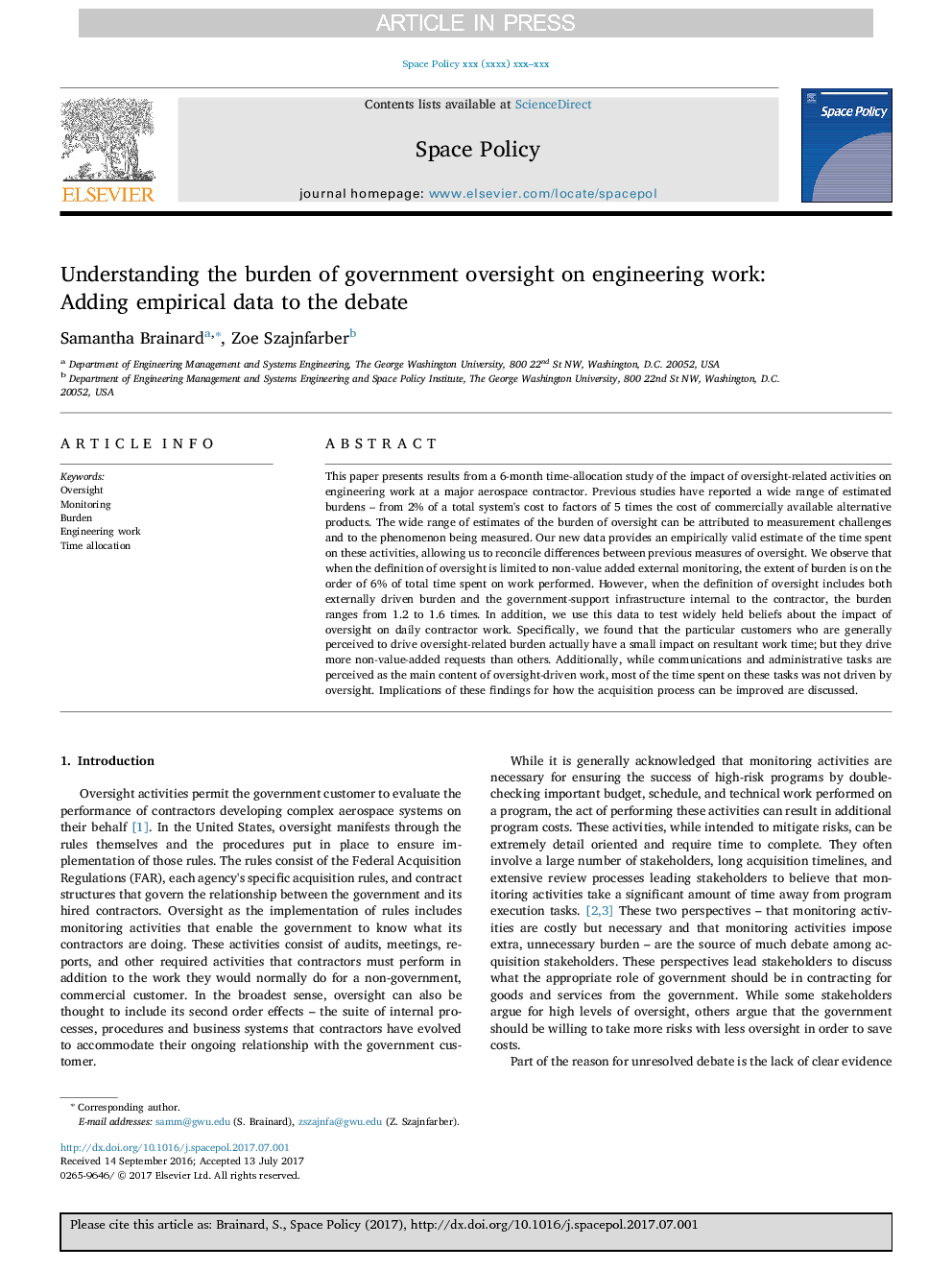ترجمه فارسی عنوان مقاله
درک بار بر نظارت دولتی بر کار مهندسی: اضافه کردن داده های تجربی به بحث
عنوان انگلیسی
Understanding the burden of government oversight on engineering work: Adding empirical data to the debate
| کد مقاله | سال انتشار | تعداد صفحات مقاله انگلیسی |
|---|---|---|
| 108612 | 2017 | 11 صفحه PDF |
منبع

Publisher : Elsevier - Science Direct (الزویر - ساینس دایرکت)
Journal : Space Policy, Volume 42, November 2017, Pages 70-80
ترجمه کلمات کلیدی
نظارت، نظارت بر، بارگیری، کار مهندسی، تخصیص زمان،
کلمات کلیدی انگلیسی
Oversight; Monitoring; Burden; Engineering work; Time allocation;

